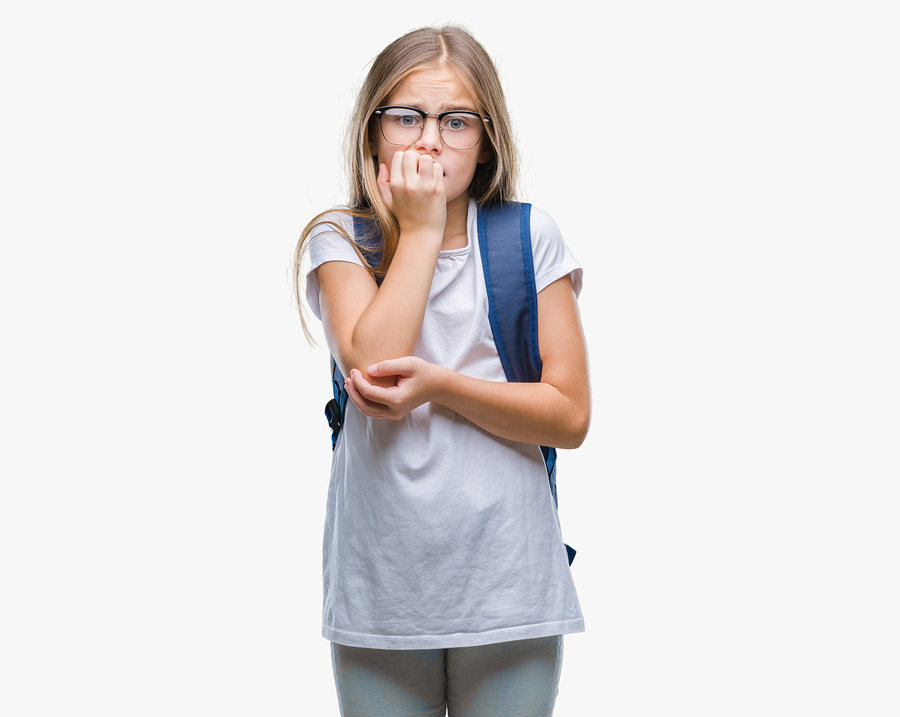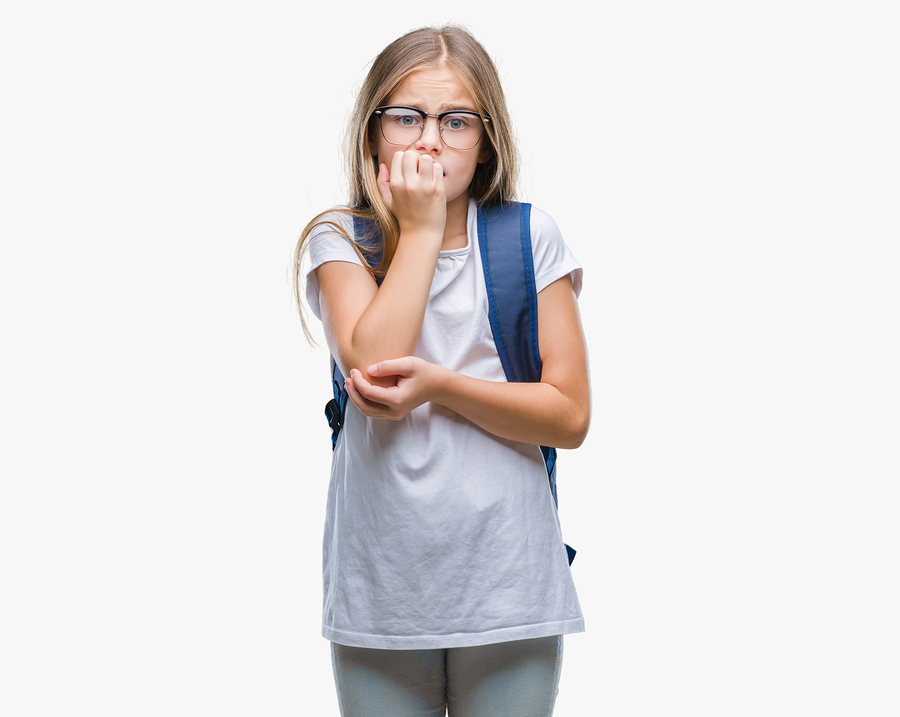Many students are suffering from clinical anxiety, is there anything a teacher can do to help students cope?
Photo: Bigstock
According to the National Institute of Mental Health, approximately 32 percent of adolescents have an anxiety disorder; this means that, in a classroom of 24 students, eight of them will suffer from clinical anxiety.
It is essential to understand that anxiety is a normal reaction that can be provoked by many different things, but it can become a real problem, especially in children.
According to The WayAhead Anxiety organization, each childhood development stage has different fears and anxieties, which they outlined in the following way:
-
From seven months to toddlers: fear of strangers, separation, loud noises, animals, and big machines, like a vacuum, for example.
-
From toddler to Middle Childhood: fear of animals or insects, the dark, separation, monsters and other supernatural beings, like thunders.
-
Middle Childhood to Late Childhood: fear of darkness, supernatural beings, injuries, heights, getting lost or trapped, being a victim of a crime, dentists, doctors and dying.
-
Late Childhood to Early Adolescence: fears are centered in social situations, especially being rejected by others, being embarrassed, dating, oral presentations, exams, death, and physical injuries.
And the critical part here is looking out which fear can provoke an anxiety attack on the student. If it interferes with their daily activities, the concern is not age-appropriate (like a ten-year-old stressed because he’s separated from his parents), or if the distress is lasting for an unusually long time, it may be an anxiety problem and the teacher should seek an expert.
How can a teacher help?
Having negative emotions is normal, and children need to learn how to cope and manage these feelings. The way teachers and all adults react to these emotions serve as an example for them, so educators must know how to recognize and understand the child’s feelings.
First of all, when someone is having an anxiety attack, teachers mustn’t dismiss it as something silly or by telling them to stop worrying. To them, their fears are genuine, so by accepting them or validating them may sooth the student, especially in critical moments like before a test or a presentation.
Another way to help students is by teaching them to name different emotions so they can identify the origin and can cope with them and gain some control over them. It can be by either playing charades or showing them different cartoon characters portraying distinct emotions and having them identify it and explain why the character may feel that way.
Moreover, asking them to remember specific times they’ve felt anxious before can be helpful. Is it before a test or class presentation? After they remember what made them nervous or worried, they should discuss what they did to overcome that moment and what can they do to help a classmate that may feel that way.
Furthermore, anxiety makes people uncomfortable, distressed and alarmed, so teaching them how to reduce those feelings can be very empowering for them. Relaxation skills like slow breathing and muscle relaxation are skills that kids can mastered and use almost any time.
Another option is to help them think through their negative feelings. Anxious students often think of the worst case scenario and will seek encouragement from an adult in an attempt to justify their fear. So, instead of giving them a concrete answer, help them think about what makes them worry.
When people experience an anxious situation, they think emotionally, not logically, so another way to make them feel through is by problem-solving. This skill makes them develop a systematic way of approaching problems, so they learn to manage them. Ask them what the problem is, what can they do to handle it, and what would happen if they did those things. Ask them what they think is the worst thing that could happen, what happened last time they went through this; what do they know about the situation. Help them differentiate between a realistic and unrealistic outcome.
Another characteristic of anxious students is negative self-talk because they tend to think the worst of themselves and the situation. Teachers should encourage positive self-talk, or having brainstorming sessions.
Having the class brainstorm by making them think of ways they can change their self-talk. If someone is having a hard time, they can start by thinking about what they can say to someone else. Make them change “I’m hopeless; I know I can’t do this,” to things like “I can try my best.”
By gradually exposing students to their fear can also help them cope with their anxiety. For example, if the teacher notices that a student is anxious before speaking to the class, ask simple yes or no questions until they feel comfortable. Then, switch to more open-ended questions until they start feeling more relaxed when they talk in class.
Beyond classroom activities or teaching students, teachers should also learn how to self-regulate themselves around anxious people, primarily to avoid overprotective attitudes. By “rescuing” the student from stressful situations, he or she gets the wrong message: that the teacher does not believe she can cope with that situation or that it is dangerous and that, by being anxious, she will receive comfort and protection. On the contrary, if the teacher reacts angrily, the student will be exacerbated.
A way to control these reactions when facing an anxious student is by planning. Especially planning to ignore an undesirable behavior because giving too much attention can reinforce bad behavior. Students may see that, by feeling stressed, they can avoid classroom presentations or let bad behavior go unpunished and get comfort so, by starting to ignore an anxious student will encourage independence slowly.
With 8 out of 24 American students having clinical anxiety, it is becoming a mental health crisis. By teachers learning how to help the student manage their stress and learn to cope can really make a difference. Also, know how to distinguish between a naughty student and an anxious one. Moreover, knowing when is something they can manage in their classroom and when a professional is needed, like when the anxiety is causing them significant distress, or if it is interfering in their academic life.
This article from Observatory of the Institute for the Future of Education may be shared under the terms of the license CC BY-NC-SA 4.0 
)
)





)
Paulette Delgado
Paulette Delgado
Paulette Delgado